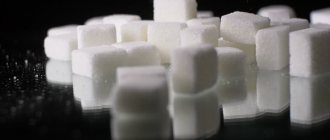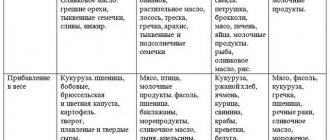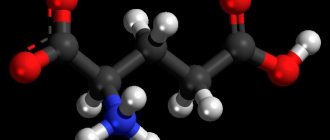Benefits of Gluten
The benefits of gluten are very significant for the human body. Gluten is a protein, which means it is a building material for body cells. With the help of plant proteins, human bones and muscles are formed, biochemical processes in the blood and lymph are normalized, metabolic and hormonal processes are regulated.
Gluten is rich in amino acids. They take part in all processes of the human body. Without amino acids, the body begins to lose its correct rhythm, and an endless number of diseases appear that cannot be cured with drugs.
Gluten contains many nutrients.
During heat treatment, some of the beneficial nutrients are lost, but still, enough of them remain to consider gluten beneficial for the body:
- Gluten contains B vitamins.
They are involved in the conduction of nerve impulses throughout the body and help strengthen the immune system. - Vitamin C
, contained in gluten, strengthens the immune system, helps fight viruses, and regulates the oxidative functions of the body. - Vitamin A
has a positive effect on human vision, reduces the negative impact on the retina under increased stress, and helps restore vision. - Vitamin E
is involved in the regeneration of the skin and promotes rapid healing of wounds. - Calcium and magnesium
have a positive effect on the human cardiovascular system, strengthen the heart muscle, normalize blood pressure, and relieve symptoms of VSD. - Calcium and phosphorus
are involved in the formation of human bone tissue, its strengthening, and the regeneration of tooth enamel. Especially, growing organisms, pregnant women and menopausal women need them. - Zinc
strengthens the immune system, takes part in hematopoiesis, regulates metabolic processes in the body, and prevents dental diseases. - Iron
helps maintain normal hemoglobin levels in the human body. Indicated for anemia of varying degrees, pregnant women and children. - Iodine
contributes to the normal functioning of the thyroid gland and takes part in the production of hormones. It is especially necessary for children during periods of intensive growth and for elderly people.
Gluten also contains essential and non-essential amino acids.
Their role in the human body is extremely important:
- contribute to the proper development of human muscle mass;
- increase endurance during physical activity;
- reduce the perception of muscles and body tissues to infections and diseases;
- regulate the functioning of the nervous system and the conduction of impulses into muscle tissue;
- promote the production of collagen and rapid restoration of body tissues;
- take part in the formation of a person’s hormonal background, his endurance during intense physical activity;
- regulate human sleep and the normal functioning of the nervous system, are responsible for tissue relaxation;
- control a person’s growth, the amount of muscle mass and its correct structure;
- promote the production of seminal fluid in men and regulate its quality;
- stimulate fat metabolism in the liver tissue;
- participate in the production of sex hormones in adolescents and pregnant women.
All beneficial nutrients contained in gluten ensure the harmonious and proper development of the human body. They prevent the occurrence of metabolic diseases, improve the physical performance of the body and its endurance against infectious diseases and the influence of the external environment on the activity of the body as a whole.
Why is gluten bad for you?
In the modern world, a tendency has begun to replace concepts. The entire Internet is full of headlines about the dangers of gluten. Many gluten-free diets have appeared; large supermarkets have entire display cases with gluten-free products. Online stores offer a variety of candies, chocolate, dairy products, pasta, and gluten-free bread.
The problem is that gluten is only harmful to a tiny percentage of the world's population. These are people with an autoimmune disease called celiac disease or people with an allergic reaction to gluten. Other components of flour products can cause harm to everyone else. This may be intolerance to lactose, which is part of baked goods, or intolerance to certain sugars.
The above problems can cause reactions in the body that are similar to the symptoms of celiac disease. Therefore, people, having read not entirely competent information, diagnose themselves and go on diets that are dangerous to their health.
Symptoms and reactions to lactose or sugars found in flour products may include the following:
- bloating - any healthy person can experience severe gas formation if he eats soft baked goods;
- abdominal pain - this symptom can be caused by common yeast;
- diarrhea - this is more like poor absorption of milk sugar - lactose or an allergy to cow protein;
- heaviness in the stomach - it is difficult for him to digest large amounts of soft bread;
- vomiting - this symptom is more typical for young children with lactose intolerance.
The only way gluten can be harmful is to artificially enrich the product with additional protein. Like any excess in the body, gluten will cause negative symptoms. This in no way indicates illness or intolerance. Moderate consumption of gluten in a healthy person cannot cause negative consequences.
Diseases for which you need to reduce gluten consumption in order to get rid of unpleasant symptoms:
- gastritis, gastroduodenitis, stomach ulcer;
- pancreatitis;
- biliary dyskinesia;
- fatty liver degeneration;
- inflammation of the small and large intestines;
- obesity;
- tendency to constipation or diarrhea.
For such diseases, flour products should be consumed in the form of crackers. They are easier to digest and do not cause side effects. It is better to limit other products with artificial injection of wheat protein or, at the beginning of treatment, exclude them from the diet.
The harm of gluten to the human body is just a publicity stunt to create the opportunity to mass sell gluten-free products. They cost an order of magnitude more than regular ones. Therefore, companies involved in this area are enriching themselves due to the ignorance of the bulk of the population.
Meat, poultry and fish
Protein products are guaranteed to be gluten-free only if they have not been industrially processed. Wheat flour, which is dangerous for celiac disease, is often added to meat, fish, and chicken semi-finished products. In sausages, sausages, and minced meat, gluten is often present as a filler.
If you need gluten-free food, cook your own from fresh or frozen ingredients.
- Yarrow - beneficial properties and contraindications for treatment. Uses of yarrow
- Faringosept - instructions for use. Why Faringosept tablets help children and adults
- Diet for candidiasis to treat the disease
Gluten intolerance
According to research from the World Health Organization, there are 1% of people on earth who have complete gluten intolerance. This is a congenital autoimmune disease that causes intolerance to wheat proteins and their derivatives.
In people with this disease, gluten causes a specific immune response in the small intestine. Protein fractions inflame the walls of the organ, the villi located on the epithelium become thinner, become flat and cease to fully absorb nutrients from food. In advanced cases, bald spots form on the villous layers of the intestines, and food stops being absorbed. This can be fatal. The only salvation for such people is a lifelong gluten-free diet.
In some patients, the disease manifests itself from the first months of life.
When a child is introduced to complementary foods made from oatmeal or wheat porridge, he develops a clear picture of celiac disease:
- large swollen belly;
- diarrhea;
- vomit;
- thinning of the limbs;
- causeless crying;
- loss of sleep;
- weight loss;
- There may be constipation for up to 5-7 days.
In another category of people, celiac disease may appear in adulthood or adolescence, when a certain trigger is triggered and gives impetus to the immune system to develop a dangerous disease.
A trigger can be:
- onset of puberty;
- severe stress;
- suffered a severe viral disease;
- radiation or chemotherapy;
- taking potent drugs.
Doctors divide celiac disease into categories, depending on the nature of the symptoms:
- Typical celiac disease.
In this form, all symptoms persist. - Atypical celiac disease.
Has extraintestinal manifestations. These could be headaches, rashes, joint pain, mental disorders. - Latent form.
It does not cause clinical manifestations of the disease at all, or they are very blurred. It is impossible to establish a relationship with gluten without genetic tests. - Refractory.
This type of disease does not give a positive response to dieting. The only way out is to inject the patient with hormones to relieve symptoms.
Gluten Free Cereals
Celiac disease is an aggressive reaction of the immune system to a number of proteins called gluten. The disease is rare and is inherited.
Even a small amount of dangerous protein damages the villi of the small intestine and disrupts the digestion process.
Hidden gluten is especially dangerous because it is found in products where people do not expect to find it. One of the ways of penetration is through production technologies. If one mill is used to produce wheat and buckwheat flour, then the latter may contain gluten, although buckwheat does not contain this protein.
Cereals containing gluten:
- wheat;
- barley;
- rye;
- oats
Gluten-free carbohydrates come from the following grain products:
- White, brown rice . Starch and cereals from these grains are rich in carbohydrates and simple proteins.
- Millet . Cereals and flour contain valuable vitamins and microelements.
- Corn . The cereal is rich in potassium. A variety of dishes are prepared from it.
- Sorghum . Serves as a raw material for the production of flour, starch, and cereals. All of them are rich in carbohydrates, carotene, and vitamins.
- Buckwheat . Grains are a valuable source of folic acid. In addition to porridge, you can cook cutlets from them and bake pancakes from flour.
- Treatment of cataracts without surgery with drugs
- Blood transfusion from a vein into the buttock
- How to make a bouquet of sweets with your own hands
Gluten Free Products
Below are gluten free products:
- Fruits and vegetables.
- Meat and fish.
- Eggs.
- Buckwheat, corn, rice and their derivatives.
- Natural dairy products.
- Natural spices.
- Homemade jam, pastille, honey.
- Seafood.
- Vegetable oils.
What foods contain gluten?
Gluten is found in the following foods:
- Sausages.
- Cheeses.
- Cereals: wheat, barley, millet, oatmeal and their derivatives.
- Sauces, mayonnaise.
- Candies, cookies, ice cream.
- Semi-finished products.
- Alcoholic drinks.
- Instant porridges and soups.
This list can be continued indefinitely. All store-bought products may contain obvious or hidden gluten. It can also be found in cosmetics and medicines. It is very important for people with celiac disease to study the composition of everything they purchase. And food should be prepared at home with your own hands to prevent even traces of protein from getting into the food you eat. These measures will be the key to relieving the symptoms of the disease and returning to normal life.
Recipes for food and drinks for a gluten-free diet
Cauliflower soup
Pre-clean vegetables - carrots, onions, cabbage inflorescences. Add diced vegetables to the meat broth boiled in advance and bring to a boil. Add the cabbage inflorescence, disassembled into parts, to the boiling broth. Leave over medium heat until all ingredients are cooked. After cooling, season with sour cream sauce with the addition of herbs.
Creamy mushroom soup
Prepare and finely chop: onions, mushrooms, potatoes. Add chopped potatoes and onions to the prepared meat broth and bring to a boil. After boiling, add chopped mushrooms. Leave on fire until ready. Upon completion of cooking, turn into a homogeneous mass using a blender. Spices are added before serving.
Potato casserole
Boil washed potatoes with skins, peel, cut into rings (800 g). Boil beef loin (0.5 kg), cut into strips, fry with onions in sunflower oil. Blanch tomatoes (3 pcs.), peel, cut into rings. Fill the baking dish in layers with the prepared ingredients, pour in a mixture of 4 eggs and 60 ml. milk. Bake at 190 degrees Celsius for 35 minutes.
Potato casserole on a diet
Liver pancakes with rice
Clean a piece of beef liver (800 g) from vascular films and pass through a meat grinder. Boil half a glass of rice cereal in water with added salt. Chop onions (1 pc.), sauté in sunflower oil. Mix all prepared ingredients, add 2 beaten eggs, spices, salt to taste. Bake in the oven for 20 minutes. at a temperature of 180 degrees.
Cheesecakes with corn flour
Grind a kilogram of low-fat cottage cheese through a sieve, add 3 tbsp. l. powdered sugar, vanilla sugar, ½ tsp. salt, mix gently. Add half a glass of corn flour and 3 yolks to the mixture. Dip in corn flour and bake in the oven at 170 degrees Celsius.
Chocolate dessert
Melt butter and chocolate, 100 grams each, in a water bath. Separately, beat 4 eggs, 180 g of powdered sugar, add 130 g of cocoa to the egg mixture. Combine the butter-chocolate mixture with the egg mixture. Grease the baking dish with melted butter. butter, fill with the prepared mass, bake at 160 degrees in the oven for half an hour.
Chocolate dessert
Cauliflower muffins with cheese
Divide the cauliflower inflorescence into parts and boil until soft. Drain the water and puree the cabbage in a blender. Add 2 beaten eggs, 70 grams of low-fat yogurt, 1 clove of chopped garlic, half a glass of grated cheese to the cabbage puree. Bake in the oven for 20 minutes at 160 degrees Celsius.
Banana and kiwi smoothie
Peel 3-4 chilled kiwis and one banana, place in a blender bowl and chop. Add 30 grams of low-fat yogurt, 10 grams of honey, beat with a mixer.
Advice from nutritionists
To maintain the normal functioning of the body, you need to take a closer look at the advice of nutritionists:
- You should not diagnose yourself only against the background of gastroenterological symptoms. For this, there are special blood tests, and in some cases, a tissue biopsy of the small intestine. Only against the background of the results can a qualified gastroenterologist make a diagnosis and recommend a gluten-free diet.
- You cannot prescribe such a diet for yourself. This can have very serious health consequences. The body will be deprived of vital vitamins and microelements. Severe dietary restrictions will cause a lot of diseases and a significant decrease in immunity.
- Overweight people can follow a gluten-free diet only regarding flour products. This measure will help reduce body weight.
The main thing to remember is that moderation in food consumption should be systematic. Only then will the food not cause side effects, and the body will function correctly and organically.










